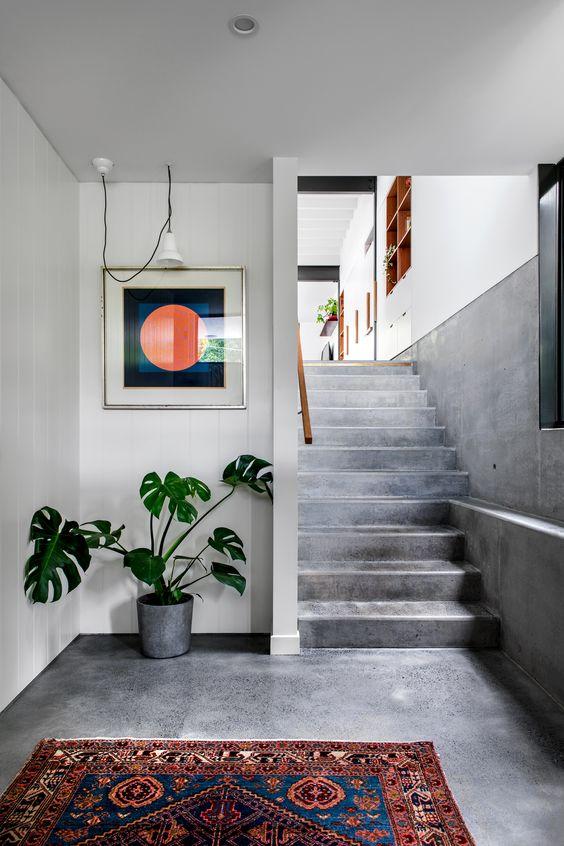
Slippery concrete can be extremely dangerous. A slight slip and fall might result in a concussion, a broken hip, or other catastrophic injuries.
If you have a concrete surface or ornamental concrete on your property, it is vital to preserve it from water and other elements so that it does not become slippery. You might make it non-slip by putting a layer of non-slip concrete sealer or adding non-slip additives like silica sand to the concrete sealer before sealing.
There are several finishes you may use to make freshly poured concrete steps safer.
Better concrete quality
Most significantly, if at all feasible, try to focus on laying down a great quality concrete possible so that you don’t have to rely on a sealer as heavily to avoid a slip. If it is resilient and the paint job is thorough, even a small layer of good sealer can be enough to prevent an accidental slip in your home.
A thin layer of sealer will help prevent plastic from accumulating, reducing the quantity of decorative sealer and grit additives required for your concrete surface.
Keep in mind that you’re using the sealer to strengthen your concrete, so make sure it’s not causing the concrete to weaken.
Anti–slip sealant
The first alternative is to use a nonslip sealant. Penetrative sealers, which work beneath the surface rather than affecting the texture of the surface, can be used. These sealers penetrate the pores and react with the surface beneath, strengthening it from the inside out. These sealers are naturally non-slippery because they do not affect the surface from the outside.
You may walk as freely on the sealer coating as you would on the concrete. Use a water repellent sealant to prevent surface water absorption by up to 95% and make the surface resistant to humidity, rain, and other factors.
Slip-Resistant Materials
Anti-slip additives will be accessible wherever the sealer is sold. They are often available in fine or coarse grades, depending on how much gripping the slippery surface requires.
Finishing with rock salt
This finishing method is used before the concrete has entirely hardened. The technique involves sprinkling salt on a damp surface and smoothing it out using a trowel. When the concrete surface has fully dried, the salt washing is removed, revealing an appealing texture.
Several people have observed that adding materials to the sealer, such as aluminum oxide grit, makes a big effect. The material is widely accessible and works well with a variety of sealers.
The best part is that it is available in a range of colours, providing you a choice of alternatives without jeopardizing the appearance of your slick concrete surface. The material is economically priced and has a wide range of applications.
Silica Sand
A coating of silica sand is applied over the initial coat of fresh concrete sealer during the procedure. The second layer of concrete sealer is put and finished after the first coat has cured. Using this procedure, the surface appears slightly cloudy.
Primer and paint
The slick concrete can also be primed and repainted, with grit additives added to the paint to make it non-slippery. Clear grit performs similarly to silica sand, but it does not cloud your concrete sealer.
Again, you can get the grit where you buy the paint. Follow the mentioned directions for mixing it into the paint.
While sand and sawdust can also be used as grit additions, the newest substance which is sold particularly to make it less slippery, is much lighter and combines more easily with paint. As a result, you will find it much easier to work with these chemicals.
Color Hardener
Color hardeners appear to be another successful method for contractors. Even if you do not use the hardener, you will see the enormous benefit and coverage it can provide. The colour hardener does not appear as prominently on the surface as polymer grit.
It is also considerably more robust than the sealer, which is vital because when the additive wears out, it must lift off to prevent slip. This colour hardener procedure will not cause the same problem.




